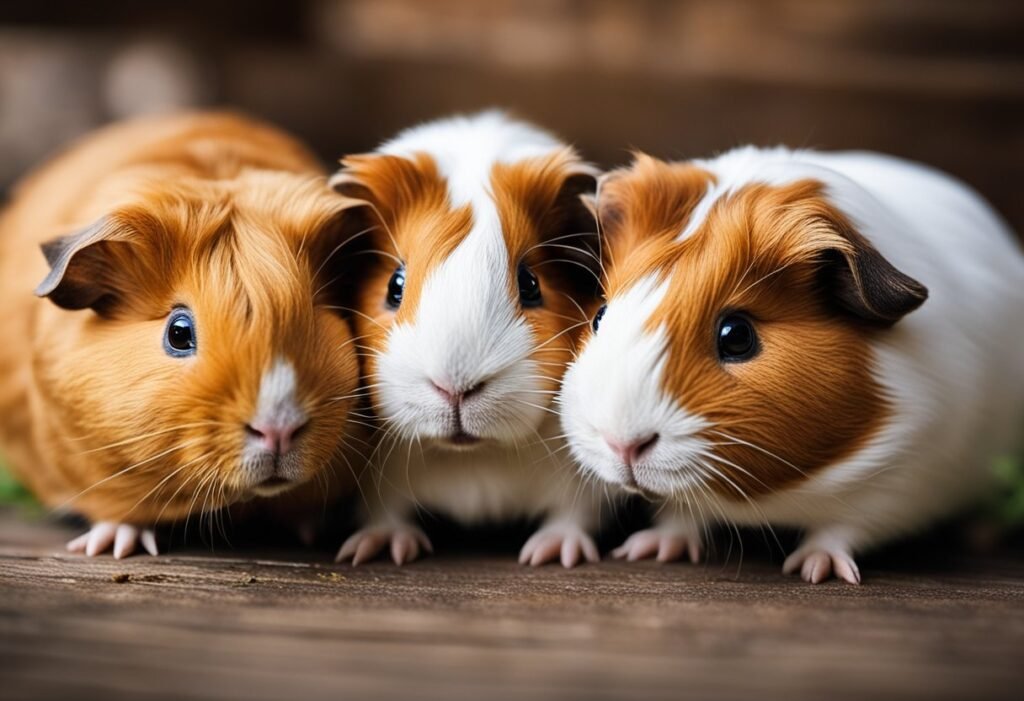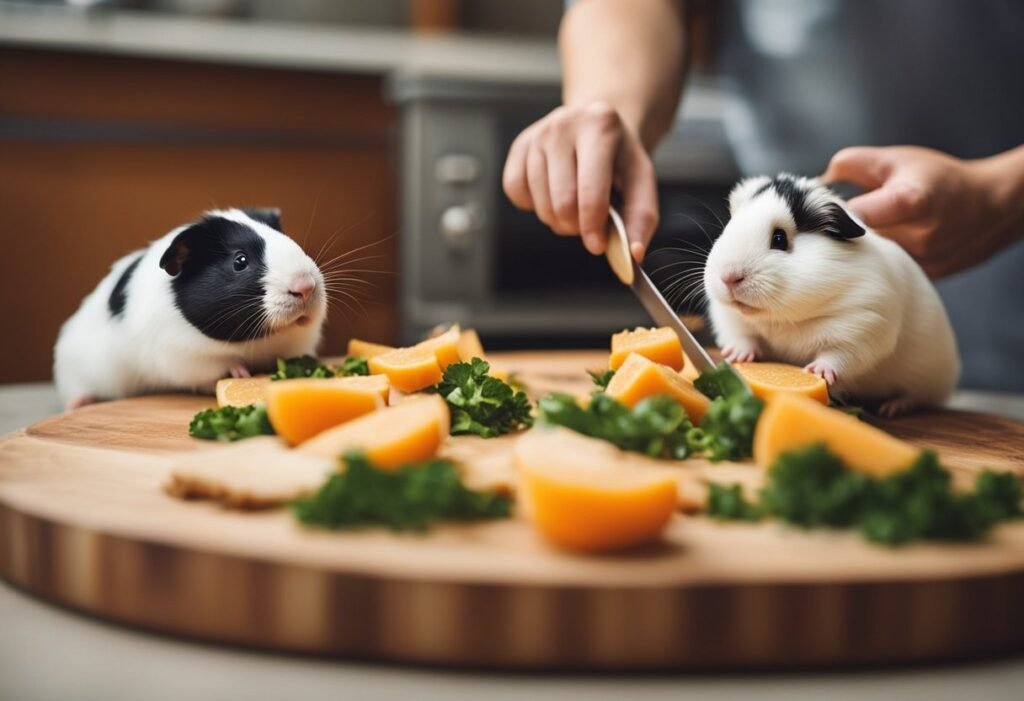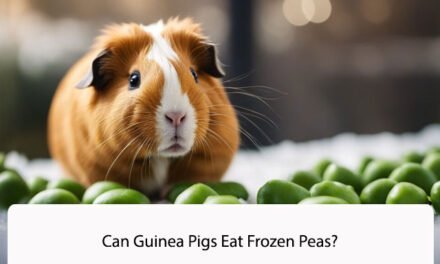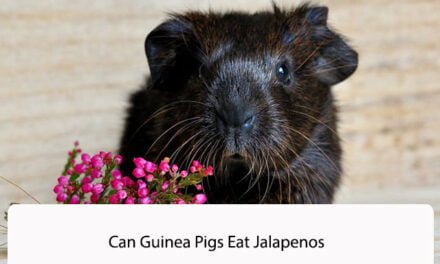Guinea pigs are adorable and friendly pets that are loved by many. As a responsible pet owner, it’s important to ensure that your guinea pig is getting a well-balanced and healthy diet. While guinea pigs are herbivores and primarily eat hay, fresh vegetables, and fruits, not all fruits and vegetables are safe for them to consume. In this article, we will be discussing whether or not guinea pigs can eat Cuties, a popular citrus fruit.

Cuties are a type of mandarin orange that are sweet, seedless, and easy to peel. They are a popular snack among humans due to their convenience and delicious taste. However, as guinea pig owners, it’s important to know whether or not Cuties are safe for our furry friends to eat. In this article, we will be answering this question and providing you with all the information you need to ensure that your guinea pig is getting a safe and healthy diet.
Understanding Cuties

Cuties are a type of mandarin orange that are small and easy to peel. They are often marketed as a healthy snack for kids and adults alike. Cuties are sweet, juicy, and packed with vitamin C, making them a popular choice for many people.
When it comes to feeding cuties to guinea pigs, it’s important to understand that they are high in sugar. While guinea pigs do need some sugar in their diet, too much can lead to health problems such as obesity and dental issues. Therefore, cuties should only be given to guinea pigs in moderation.
In addition to their high sugar content, cuties are also acidic. This can cause digestive problems for guinea pigs if they eat too many. As with any new food, it’s important to introduce cuties slowly and in small quantities to ensure that your guinea pig can tolerate them.
Overall, cuties can be a healthy and tasty treat for guinea pigs when given in moderation. However, it’s important to keep in mind their high sugar and acidity levels to avoid any potential health problems.
Guinea Pigs’ Dietary Needs

As responsible pet owners, we must ensure that our guinea pigs receive a balanced diet that meets their nutritional needs. Guinea pigs require a diet that is high in fiber, low in fat, and rich in vitamin C.
A guinea pig’s digestive system is designed to process large amounts of fibrous material, such as hay and grass. Therefore, it is essential to provide them with unlimited access to good quality hay. Timothy hay is an excellent choice, as it is high in fiber and low in calcium.
In addition to hay, guinea pigs require a daily serving of fresh vegetables. Leafy greens such as kale, spinach, and parsley are great sources of vitamin C. Other vegetables such as carrots, bell peppers, and cucumbers can also be given in moderation. It is important to introduce new vegetables gradually and monitor your guinea pig’s reaction to them.
Fruits, such as Cuties, can be given as an occasional treat. While Cuties are a good source of vitamin C, they are also high in sugar. Therefore, they should be given in moderation and not as a regular part of their diet.
In summary, a guinea pig’s diet should consist of unlimited access to hay, a daily serving of fresh vegetables, and occasional treats such as fruits. By providing a balanced diet, we can ensure that our guinea pigs remain healthy and happy.
Effects of Cuties on Guinea Pigs

Cuties are a type of citrus fruit that is often enjoyed by humans. However, when it comes to guinea pigs, it is important to be cautious about feeding them these fruits. While guinea pigs can eat some fruits in moderation, it is important to understand the effects that Cuties can have on their health.
Cuties are high in sugar and acidity, which can be harmful to guinea pigs in large quantities. Consuming too much sugar can lead to obesity, dental problems, and digestive issues. Additionally, the high acidity in Cuties can cause mouth sores and other health problems in guinea pigs.
It is important to note that while Cuties are not toxic to guinea pigs, they should only be fed in small quantities as an occasional treat. It is recommended to limit their consumption to a small slice or two per week.
In summary, while Cuties may seem like a healthy and tasty snack for guinea pigs, it is important to be cautious about feeding them in excess. As with any new food, it is important to introduce Cuties slowly and monitor your guinea pig’s reaction to ensure they do not experience any negative effects.
Safe Fruits for Guinea Pigs

As guinea pigs are herbivores, they require a diet that is rich in fiber and vitamin C. While hay and pellets are the primary sources of nutrition for guinea pigs, fruits can be a healthy treat for them as well. However, not all fruits are safe for guinea pigs to consume. In this section, we will discuss some safe fruits for guinea pigs.
Apples
Apples are a great source of vitamin C, fiber, and antioxidants. Guinea pigs can safely eat apples, but it’s important to remove the seeds and core. The seeds contain cyanide, which is toxic to guinea pigs. Additionally, apples are high in sugar, so they should be given in moderation. One or two small slices of apple per week is enough for a guinea pig.
Pears
Pears are another safe fruit for guinea pigs. They are high in fiber and vitamin C, and they have a sweet taste that guinea pigs enjoy. As with apples, it’s important to remove the seeds and core before feeding pears to guinea pigs. Pears should also be given in moderation due to their high sugar content.
Berries
Berries, such as strawberries, raspberries, and blueberries, are safe for guinea pigs to eat. They are high in vitamin C and antioxidants, and they have a sweet taste that guinea pigs enjoy. However, berries should also be given in moderation due to their high sugar content. One or two small berries per week is enough for a guinea pig.
In conclusion, while fruits can be a healthy treat for guinea pigs, it’s important to choose the right ones. Apples, pears, and berries are safe fruits for guinea pigs to consume, but they should be given in moderation. As always, it’s important to consult with a veterinarian before making any changes to your guinea pig’s diet.
Preparation of Cuties for Guinea Pigs

When preparing Cuties for guinea pigs, it is important to take a few things into consideration. Cuties, also known as Clementines, are a type of citrus fruit that is high in Vitamin C. Guinea pigs require Vitamin C in their diet, and Cuties can be a great addition to their meals.
First, it is important to wash the Cuties thoroughly before serving them to your guinea pig. This will remove any dirt or residue that may be on the skin. Next, you can cut the Cuties into small pieces that are easy for your guinea pig to eat. It is important to remove any seeds or pits from the Cuties before serving them to your guinea pig, as these can be a choking hazard.
When serving Cuties to your guinea pig, it is important to do so in moderation. While Cuties are a great source of Vitamin C, they are also high in sugar. Too much sugar in your guinea pig’s diet can lead to health problems such as obesity and dental issues. We recommend serving Cuties as a treat, rather than as a regular part of your guinea pig’s diet.
In addition to serving Cuties, it is important to provide your guinea pig with a balanced diet that includes hay, pellets, and fresh vegetables. This will ensure that your guinea pig is getting all of the nutrients they need to stay healthy.
Overall, Cuties can be a great addition to your guinea pig’s diet when served in moderation and prepared properly. By following these simple steps, you can ensure that your guinea pig is getting the nutrients they need to stay healthy and happy.
Risks and Precautions
As with any new food, introducing Cuties to your guinea pig’s diet should be done gradually and with caution. While Cuties are generally safe for guinea pigs to eat, there are a few risks and precautions to keep in mind.
Firstly, Cuties are high in sugar, which can lead to weight gain and other health issues if consumed in excess. We recommend limiting your guinea pig’s intake of Cuties to a small slice or two per week as a treat.
Additionally, some guinea pigs may be allergic to citrus fruits like Cuties. If you notice any signs of an allergic reaction, such as itching, swelling, or difficulty breathing, stop feeding Cuties immediately and consult your veterinarian.
Finally, be sure to always wash Cuties thoroughly before feeding them to your guinea pig. Pesticides and other harmful chemicals can be present on the skin, so it’s important to remove any potential toxins before feeding them to your pet.
In summary, while Cuties can be a tasty and nutritious addition to your guinea pig’s diet, it’s important to introduce them gradually and in moderation, watch for signs of allergies, and always wash them thoroughly before feeding.
Alternative Treats for Guinea Pigs
While Cuties can be a great treat for your guinea pig, it’s important to provide them with a variety of options to keep their diet balanced and interesting. Here are some alternative treats that are safe for guinea pigs to eat:
- Leafy Greens: Guinea pigs love leafy greens, such as kale, spinach, and romaine lettuce. These are great sources of Vitamin C, which is essential for your guinea pig’s health.
- Fruits: In addition to Cuties, guinea pigs can enjoy a variety of fruits, such as apples, bananas, and strawberries. Just be sure to remove any seeds or pits before feeding them to your pet.
- Hay: Hay is an important part of your guinea pig’s diet, and it can also serve as a tasty treat. Timothy hay, in particular, is a great option for guinea pigs.
- Vegetables: Carrots, bell peppers, and cucumbers are just a few examples of vegetables that guinea pigs enjoy. These are also great sources of Vitamin C.
It’s important to remember that treats should only make up a small portion of your guinea pig’s diet. The majority of their diet should consist of hay, fresh vegetables, and a high-quality pellet food. Always consult with your veterinarian before introducing new foods to your guinea pig’s diet.
Conclusion
In conclusion, Cuties are a safe and healthy fruit for guinea pigs to consume in moderation. They are rich in vitamin C and other essential nutrients that can benefit your pet’s health. However, it is important to remember that Cuties should only be given to guinea pigs as a treat and not as a staple food.
As with any new food, it is important to introduce Cuties gradually and monitor your guinea pig’s reaction. If your pet experiences any digestive issues or discomfort after consuming Cuties, it is best to discontinue feeding them this fruit.
Overall, Cuties can be a great addition to your guinea pig’s diet, but should be given in moderation and as part of a balanced diet that includes hay, pellets, and fresh vegetables. By providing your guinea pig with a variety of healthy foods, you can help ensure that they stay happy and healthy for years to come.
Frequently Asked Questions
What fruits are safe for guinea pigs to eat?
Guinea pigs can safely eat a variety of fruits, including apples, bananas, strawberries, blueberries, raspberries, and melons. It’s important to introduce new fruits gradually and in small quantities to avoid digestive issues.
What are some fruits that guinea pigs should avoid?
Some fruits that should be avoided include grapes, cherries, and citrus fruits like lemons and grapefruits. These fruits can be too acidic for guinea pigs and may cause digestive problems.
Can guinea pigs eat citrus fruits like oranges and tangerines?
While some guinea pigs may enjoy citrus fruits like oranges and tangerines, they are not recommended. Citrus fruits can cause mouth sores and digestive issues in guinea pigs.
What are the risks of feeding guinea pigs fruits?
Feeding guinea pigs too much fruit can lead to weight gain and other health issues. Fruits should be given as a treat in moderation and should not make up a significant portion of their diet.
How much fruit should be included in a guinea pig’s diet?
Fruits should make up no more than 10% of a guinea pig’s diet. A small slice or piece of fruit once or twice a week is sufficient.
What are some alternative snacks for guinea pigs besides fruit?
Guinea pigs can enjoy a variety of vegetables as snacks, including carrots, bell peppers, and cucumbers. Hay and fresh grass are also important components of a guinea pig’s diet.





